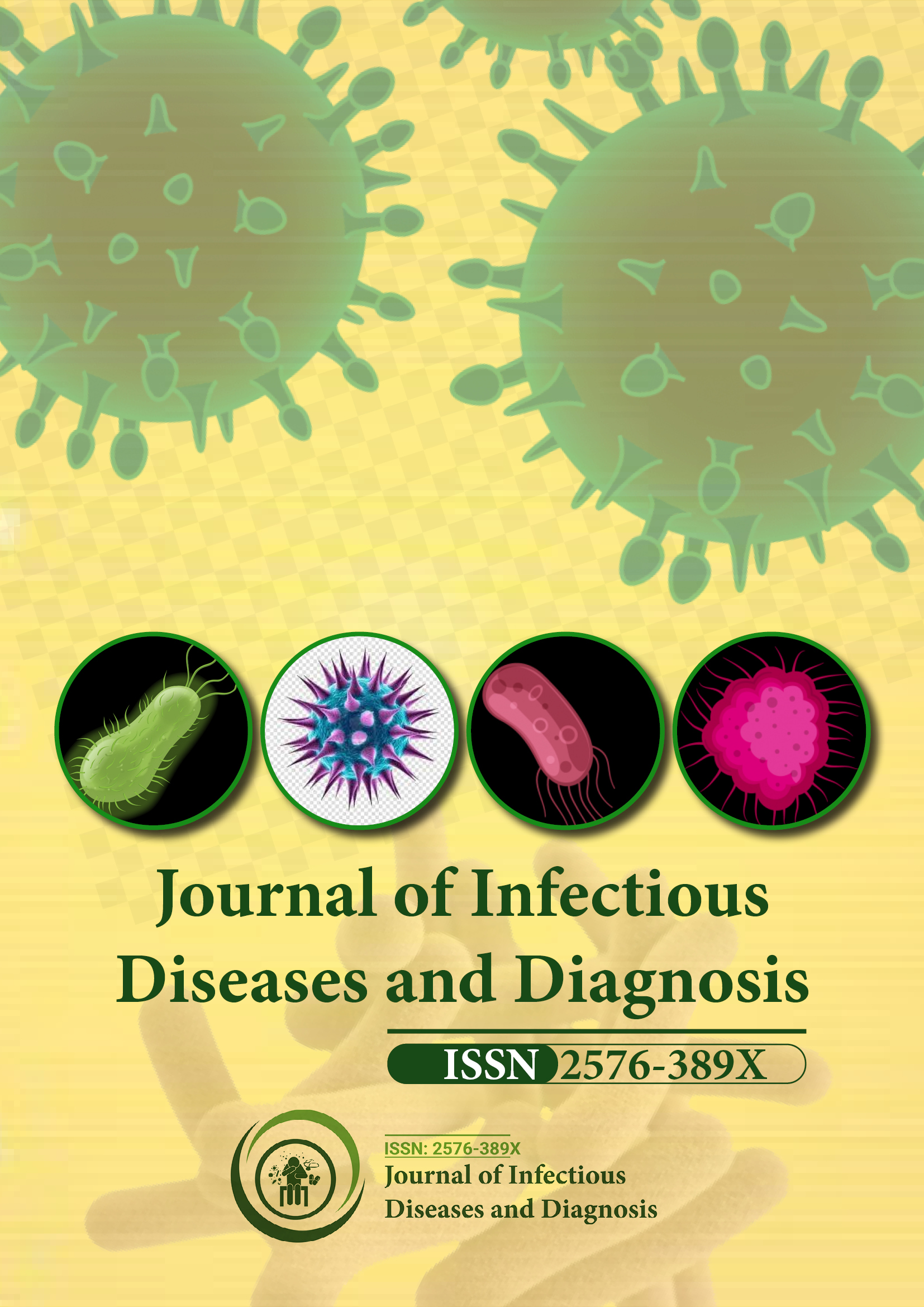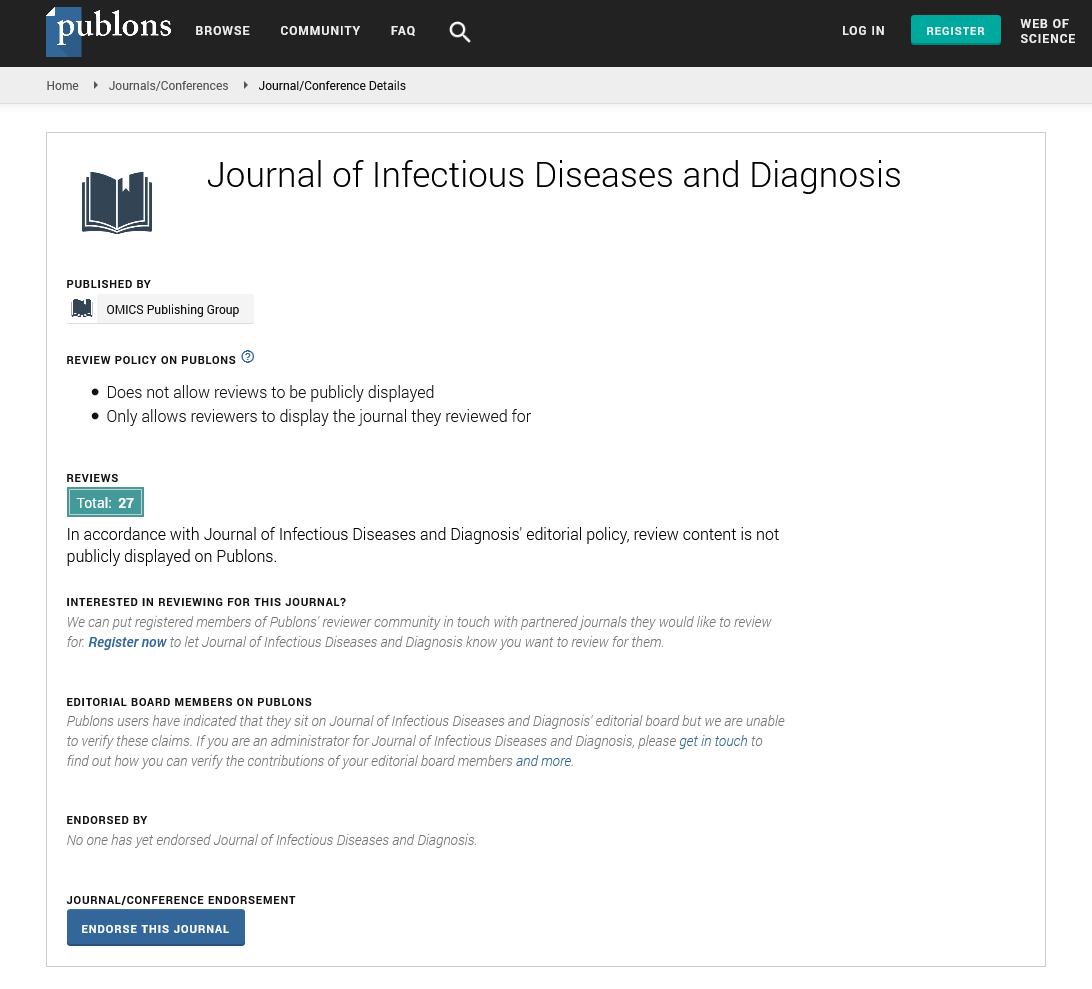Indexed In
- RefSeek
- Hamdard University
- EBSCO A-Z
- Publons
- Euro Pub
- Google Scholar
Useful Links
Share This Page
Journal Flyer

Open Access Journals
- Agri and Aquaculture
- Biochemistry
- Bioinformatics & Systems Biology
- Business & Management
- Chemistry
- Clinical Sciences
- Engineering
- Food & Nutrition
- General Science
- Genetics & Molecular Biology
- Immunology & Microbiology
- Medical Sciences
- Neuroscience & Psychology
- Nursing & Health Care
- Pharmaceutical Sciences
Editorial - (2021) Volume 6, Issue 2
A Brief Note on Neonatal Infections and Their Causes
Romesh Jaysinghe*Received: 07-Jul-2021 Published: 28-Jul-2021, DOI: 10.37421/2576-389X.2021.6.e110
Editorial Note
Neonatal infections are unit infections of the new born, nonheritable throughout antepartum development or within the 1st four weeks of life (neonatal period). New born infections could also be contractile by mother to baby transmission, within the passage throughout birth, or contractile once birth. Some new born infections are unit apparent presently once delivery, whereas others might develop within the postnatal amount. Some new born infections like HIV, hepatitis B, and protozoal infection don't become apparent till abundant later. There is a next risk of infection for preterm or low birth weight neonates. New born metastasis distress syndrome is commonly a condition of preterm neonates that may have semi-permanent negative consequences; it can even arise following associate degree infection. In some instances, new born tract unwellnesss might increase the condition to future metastasis infections and inflammatory responses associated with respiratory organ disease.
Antibiotics may be effective for new-born infections, particularly once the infective agent is quickly known. Rather than relying exclusively on culturing techniques, infective agent identification has improved well with advancing technology, but, new born mortality reduction has not unbroken pace. Whereas preterm neonates are at a very high risk, all neonates will develop infection. New born infection may additionally be related to premature rupture of membranes (breakage of the sac) that will increase the chance of new born infection by permitting passage for microorganism to enter the uterus before the birth of the child. New born infection may be distressing to the family and it initiates targeted effort to treat it by clinicians. Analysis to boost treatment of infections and prophylactic treatment of the mother to avoid infections of the kid is on-going. In industrial countries, treatment for babe infections takes place within the new born medical aid unit.
Several of the maternal infections with these organisms area unit well within the mother. Different maternal infections that will be transmitted to the kid in utero or throughout birth are unit microorganism and infectious agent sexually transmitted infections. The infant's ability to resist infection is restricted by its immature system. The contribute agents of new born infection are unit microorganism, viruses, and fungi. Additionally, the system of the new born might respond in ways which will produce issues that complicate treatment, like the discharge of inflammatory chemicals. No inheritable defects of the system additionally have an effect on the infant’s ability to rebuff the infection.
Bacteria : Bacteria Group B strep is often known because the reason for the bulk of early-onset infections within the baby. This infective agent is vertically transmitted directly from the mother to the baby. Enteric bacilli that originate from the system alimentation of the mother became as rife because the group B strep pathogens are probable to cause infection. With the advances in preventing group B strep infections, β-lactam- resistant E. coli infections have inflated in inflicting babe deaths in terribly low birth-weight and premature infants. Infections with Staph aureus are diagnosed, however not as of times as group B strep infections.
Viruses: Viruses Human immunological disorder virus sort I (HIV) infection will occur throughout labor and delivery, in utero through mother-to-child transmission or postnatal by approach of breastfeeding. Transmission will occur throughout gestation, delivery or breastfeeding. Most transmission happens throughout delivery. In ladies with low detectable levels of the virus, the incidence of transmission is lower.
Fungi : Fungi in terribly low birth weight infants, general plant infection may be a hospital-acquired infection with serious consequences, and Trichosporon. Infection is sometimes late- onset. Mycosis is related to retinopathy, pre-matureness and negative neurodevelopmental consequences. Fungus will colonize the alimentary tract of low birth-weight infants (LBI). This epithelial duct colonization is commonly a precursor to a lot of serious invasive infection.
Citation: Jaysinghe R (2021) A Brief Note on Neonatal Infections and Their Causes. J Infect Dis Diagn.6:e110
Copyright: © 2021 Jaysinghe R. This is an open-access article distributed under the terms of the Creative Commons Attribution License, which permits unrestricted use, distribution, and reproduction in any medium, provided the original author and source are credited.

